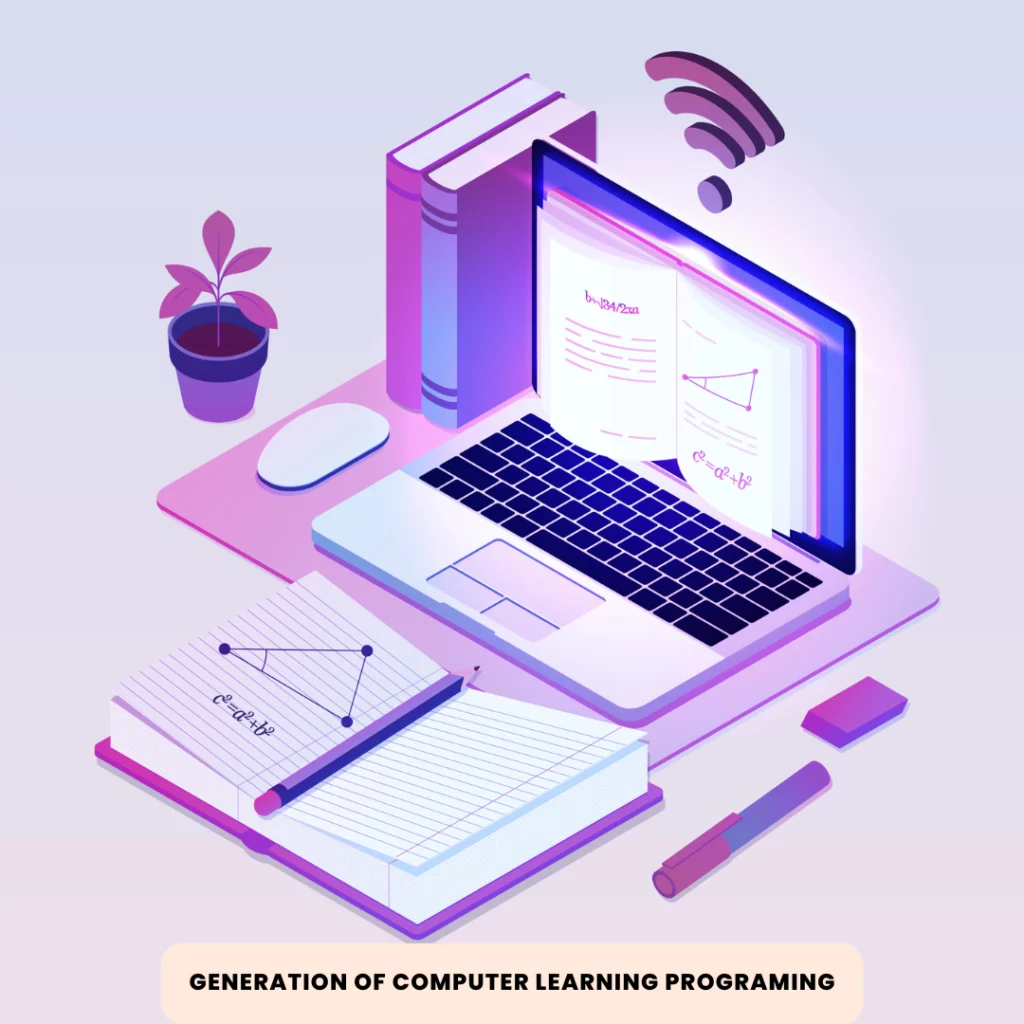In the fast-paced world of technology, the evolution of computers has been a remarkable journey. From the bulky machines using vacuum tubes to the sleek and powerful devices leveraging artificial intelligence, the generation of computer has shaped our modern landscape. Let’s explore the details of the generations and explore the impact of computer learning technology.
1. Introduction
Definition of Computer Learning Technology
Generation of Computer learning technology refers to the incorporation of machine learning and artificial intelligence in computer systems. It enables machines to learn from experience, adapt to new information, and perform tasks without explicit programming.
Evolution of Computer Learning
The journey begins with the first generation of computer and progresses through subsequent generations, each marked by significant technological advancements.
2. Generations of Computers
First Generation: Vacuum Tubes
The advent of computers marked the era of vacuum tubes. These large, fragile components laid the foundation for computation but were inefficient and prone to failures.
Second Generation: Transistors
Transistors replaced vacuum tubes, leading to more reliable and compact computers. This era witnessed increased computational speed and efficiency.
Third Generation: Integrated Circuits
The integration of multiple transistors on a single chip gave rise to smaller and more powerful computers. This era focused on improving efficiency and reducing costs.
Fourth Generation: Microprocessors
Microprocessors revolutionized computing by placing the entire CPU on a single chip. This made computers accessible to a broader audience, fostering a technological revolution.
Fifth Generation: Artificial Intelligence (AI)
The current generation explores the realms of artificial intelligence. Machine learning algorithms and neural networks enable computers to emulate human-like learning and decision-making processes.
3. The Role of Machine Learning in Computer Evolution
Overview
Machine learning involves algorithms that allow computers to improve their performance on a task through experience. It is a key component in the evolution of computer learning technology.
Incorporation of Machine Learning in Computer Systems
Modern computers leverage machine learning to enhance functionalities such as voice recognition, image processing, and data analysis. This incorporation has led to unprecedented advancements in various fields.
4. Impact on Society
Educational Advancements
Generation of Computer learning technology has revolutionized education, offering personalized learning experiences. Adaptive learning platforms use algorithms to tailor educational content to individual needs.
Automation in Industries
Industries benefit from automated processes, increasing efficiency and reducing human error. Robots and smart systems powered by computer learning technology streamline manufacturing and service sectors.
Healthcare Innovations
In the medical field, computers aid in diagnostics, drug discovery, and personalized treatment plans. Machine learning algorithms analyze vast datasets to identify patterns and make accurate predictions.
5. Challenges in Computer Learning Technology
Ethical Concerns
As Generation of computer become more intelligent, ethical considerations arise. Issues like data privacy, bias in algorithms, and the ethical use of AI pose challenges that demand careful consideration.
Security Issues
With increased reliance on computer learning, cybersecurity becomes paramount. Protecting systems from cyber threats and ensuring data integrity are ongoing challenges.
Technological Unemployment
The automation of tasks through computer learning raises concerns about job displacement. Striking a balance between technological advancements and employment opportunities is crucial.
6. Future Trends in Computer Learning
Quantum Computing
Quantum computing holds the potential to revolutionize computation by performing complex calculations at unparalleled speeds. Researchers are exploring its applications in cryptography, optimization problems, and simulations.
Augmented Reality
The integration of computer learning with augmented reality enhances user experiences. From gaming to training simulations, augmented reality opens new avenues for immersive and interactive environments.
Brain-Computer Interface
Advancements in brain-computer interface technology allow direct communication between the human brain and computers. This holds promise for individuals with disabilities and opens new possibilities for human-computer interaction.
7. Applications of Computer Learning Technology
Natural Language Processing
Computer learning technology powers natural language processing, enabling machines to understand, interpret, and generate human-like language. Virtual assistants and language translation are prominent applications.
Computer Vision
Computers equipped with vision algorithms can analyze and interpret visual information. Applications include facial recognition, object detection, and medical image analysis.
Robotics
Machine learning enhances the capabilities of robots, enabling them to adapt to dynamic environments, learn from experiences, and perform complex tasks. This has implications in industries, healthcare, and exploration.
8. How Individuals Can Leverage Computer Learning
Online Learning Platforms
Individuals can harness the power of computer learning through online platforms offering courses on machine learning, data science, and AI. These platforms provide opportunities for skill development and career advancement.
Skill Development Opportunities
With the increasing demand for skills in computer learning, individuals can explore training programs, certifications, and workshops to stay relevant in a rapidly evolving job market.
9. Government Initiatives in Promoting Computer Learning
Educational Reforms
Governments worldwide are recognizing the importance of computer learning and implementing educational reforms. Initiatives focus on integrating technology into curricula and fostering a digital-ready workforce.
Funding for Research and Development
Governments support research and development in computer learning through funding initiatives. This promotes innovation, leading to breakthroughs that benefit society as a whole.
11. Conclusion
In conclusion, the generation of computer learning technology has reshaped the world, impacting education, industries, healthcare, and beyond. As we navigate the challenges and embrace future trends, it is essential to harness the potential of computer learning for the betterment of society.


